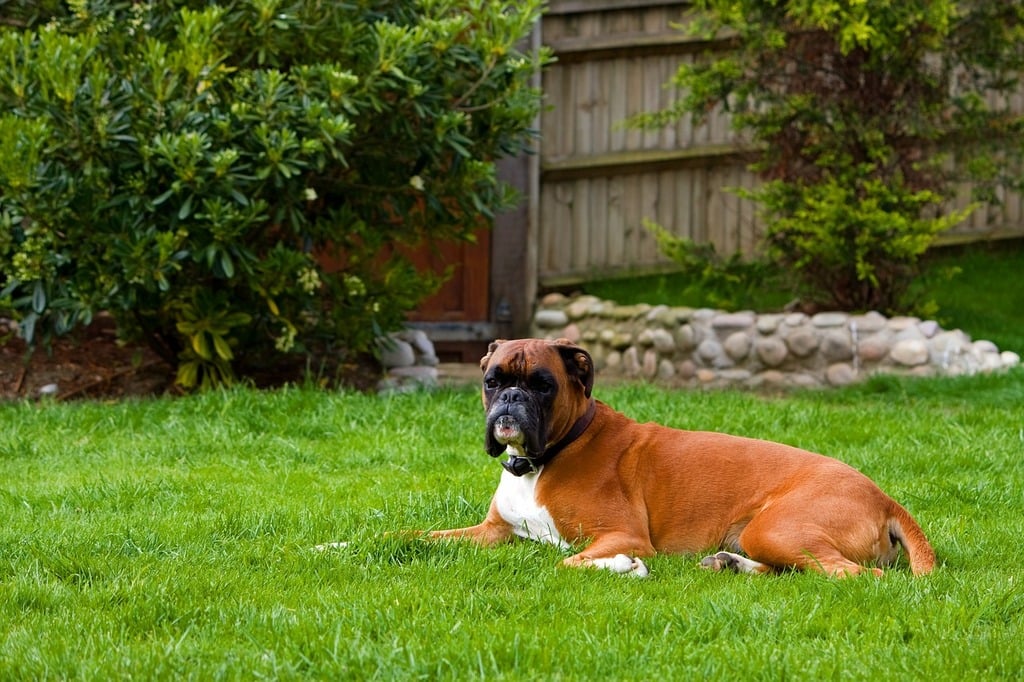
Pet Safety: Lawn Care Tips to Keep Ticks Away
Jamie TedderFlorida’s warm climate might be great for year-round outdoor fun, but it also creates the perfect environment for ticks to thrive—especially in the summer. As heat and humidity rise, so do tick populations, peaking just as families and their pets are spending more time outside. The combination of moisture, active wildlife, and backyard playdates sets the stage for increased tick activity.
Whether you’re tossing a ball with your dog, gardening, or hosting a weekend barbecue, the chances of picking up ticks on the lawn increase during this time of year. And while a tick bite may seem harmless at first, it can lead to serious health issues. These tiny parasites are more than a nuisance—they’re known carriers of diseases like Lyme and ehrlichiosis, which can affect both pets and people.
A well-kept lawn does more than look good—it can be your first line of defense for preventing tick bites. With a few smart lawn care practices, you can make your yard less inviting to ticks and safer for everyone who uses it, paws and all.
Why Ticks Are a Threat to Pets and People
Ticks are more than just a seasonal pest—they’re potential carriers of serious illness. Once latched onto a host, an infected tick can transmit Lyme disease and other harmful pathogens, especially if it goes unnoticed.
For pets, the risks include:
-
Lyme disease, caused by the bacterium Borrelia burgdorferi, often transmitted through the bite of an infected deer tick.
-
Anaplasmosis and ehrlichiosis, which can lead to fever, lethargy, and joint pain
-
Tick paralysis, a rare but serious condition caused by toxins in tick saliva
Humans aren’t immune either. Tick bites can lead to allergic reactions, skin irritation, and more serious health concerns. In the US, infected deer ticks are the primary vectors for Lyme disease. Recent estimates suggest that nearly half a million people may be diagnosed and treated for Lyme disease each year. Children playing in the yard or adults unwinding at a backyard barbecue can be exposed to tick bites without even noticing—making prevention all the more important.

5 Maintenance Tips to Prevent Ticks on Lawn
Proper lawn care is a key part of creating a space that’s uninviting to insect pests like ticks.
1. Keep Grass Short and Well-Maintained
Ticks thrive in tall grass and thick vegetation, where they can wait patiently for a passing host. The taller and more overgrown your yard, the more opportunities for ticks to latch onto your pet—or you.
Mow your lawn regularly and trim the edges, especially around fences, play areas, and dog runs. Keeping the grass at a short, uniform height removes ideal tick habitats and exposes them to the drying effects of the sun. If your yard has gotten out of hand, check out our guide on how to mow an overgrown lawn for safe and practical tips to get it back under control.
2. Remove Leaf Litter, Yard Waste, and Debris
Piles of leaves and sticks may seem harmless, but they create cool, damp areas where adult ticks can hide and breed. These spots also attract wildlife, such as mice, that can carry ticks into your yard.
Clear out leaves, tidy up flower beds, and keep woodpiles stacked neatly and off the ground. Cleanliness plays a significant role in preventing tick infestations.
3. Create a Tick-Free Buffer Zone
If your property borders woods, fields, or natural brush, consider installing a gravel or mulch barrier between these areas and your lawn. A three-foot-wide barrier can help reduce tick migration into your yard by creating a dry, sunlit space that ticks avoid.
This simple step also acts as a visual reminder to keep pets and children out of areas where ticks are more likely to be lurking.
4. Water Wisely to Avoid Moist Habitats
Ticks are highly sensitive to humidity and tend to gather in damp, shaded areas. Overwatering your lawn or allowing poor drainage can lead to soggy patches that invite tick activity.
Adjust your irrigation schedule to water early in the morning, allowing grass to dry during the day. Also, make sure gutters and downspouts are clear so water doesn’t collect near your home.
5. Trim Bushes and Trees to Let Sunlight In
Sunlight is one of nature’s best tick repellents. The more direct sunlight your lawn receives, the less appealing it is for ticks.
Prune overgrown bushes, trim low-hanging tree branches, and thin out dense shrubbery to allow sunlight to reach the ground. This helps reduce humidity and opens up your yard for safer pet playtime.
Consider Lawn Solutions That Help Prevent Tick Habitats
Choosing the correct type of grass can make a big difference in tick bite prevention. Ticks tend to avoid short, dense grass that leaves little room for them to hide. Bermudagrass, in particular, is an excellent option for Florida homeowners because it thrives even when mowed low and forms a thick, uniform canopy that discourages ticks from settling in.
Widely available from Bethel Farms as sod pallets, bermudagrass is:
-
A low-growing, fine-textured grass that tolerates low mowing heights
-
Excellent for high-traffic yards, where kids and pets play frequently
-
Characterized by its dense canopy that thrives under full sun
-
Durable and quick to recover from wear, ideal for active households
Investing in sod that allows for clean, frequent mowing is a proactive way to reduce ticks on the lawn and maintain a healthy, pet-friendly landscape.
Indoor Alternatives: Grass Pads for Dogs
During peak tick season—or on days when it's too hot to go outside—consider giving your pet a break from the outdoors altogether. A grass pad for dogs, like Gotta Go Grass®, is a practical solution for:
-
Small dogs and puppies
-
Senior pets with mobility issues
-
Pets recovering from injuries or illness
They offer a convenient and hygienic space for pets to relieve themselves without risking exposure to insect pests like ticks, mosquitoes, or fleas.
Other Tick Prevention Practices for Pets
Lawn care is only part of the solution. Combine it with these everyday practices to further protect your pets:
-
Use vet-approved flea and tick preventatives regularly
-
Check your pet’s fur and skin daily, especially around ears, neck, and belly after time outside
-
Bathe your pet regularly and keep fur trimmed to make it easier to spot ticks
-
Clean pet bedding and vacuum your home frequently, especially rugs and carpets
Also, avoid using chemical-based insect repellents designed for humans on pets. (why? add what it contains that's not safe for pets

Frequently Asked Questions (FAQs)
Is it normal to have ticks in the yard?
Yes, especially in humid climates like Florida. Ticks commonly inhabit areas with tall grasses, leaf litter, and shady environments. If your lawn borders woods or is home to wildlife, ticks may be more prevalent.
What attracts ticks to the yard?
Ticks are drawn to moisture, shade, and overgrown vegetation. Leaf piles, tall grass, and the presence of animals like deer or rodents can all increase tick activity.
What is the best way to kill ticks in the grass?
Start with consistent lawn care—mow regularly, remove debris, and keep the yard dry. You can also use natural tick control methods like cedar oil sprays to avoid tick bites or consult a lawn care expert about pet-safe treatments.
Final Thoughts
When it comes to tick bite prevention, your backyard can either be part of the problem—or the solution. By keeping your lawn short, clean, and sunny, you make it far less appealing to ticks and other insect pests.
Choosing sod like bermudagrass from Bethel Farms gives you a distinct edge. Its dense, fine-bladed growth tolerates low mowing heights—helping eliminate the tall grass ticks love to hide in. Plus, bermudagrass thrives in full sun, making it an ideal match for Florida yards where shade-loving ticks are less likely to linger. Pair your outdoor strategy with indoor options like grass potty pads for dogs, especially during peak tick season. These thoughtful decisions keep your pets protected no matter where they go.
A tick-free lawn means more carefree play, more peace of mind, and a healthier home—for you and your pets.
Shop grass sod for sale at Bethel Farms and take the first step toward a safer, stronger lawn today.

